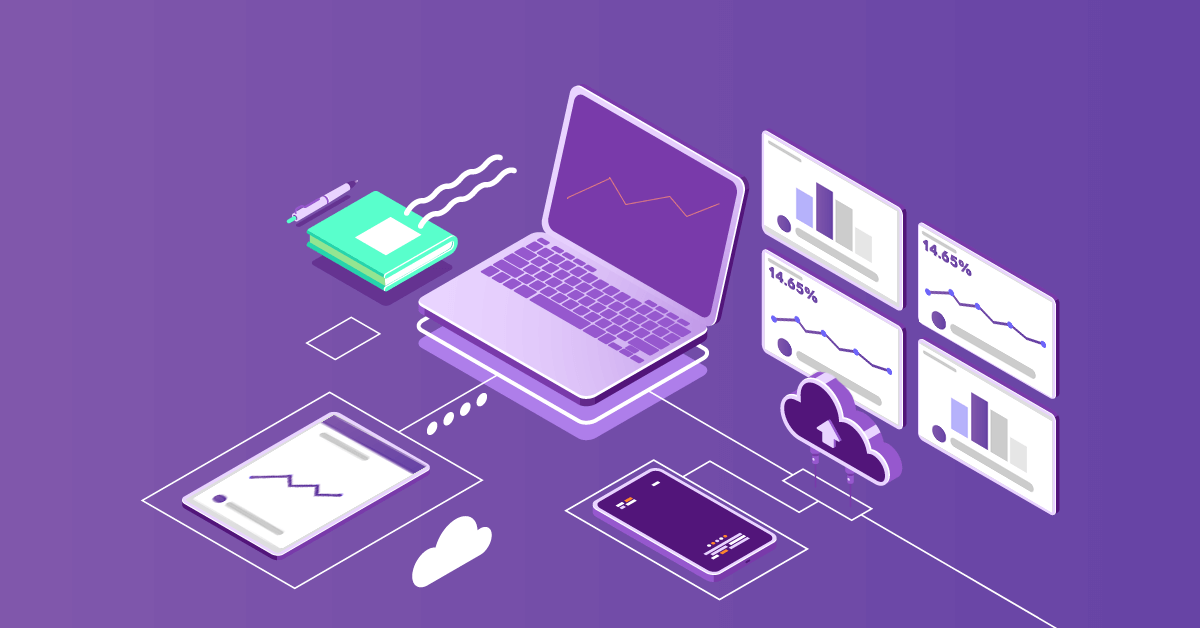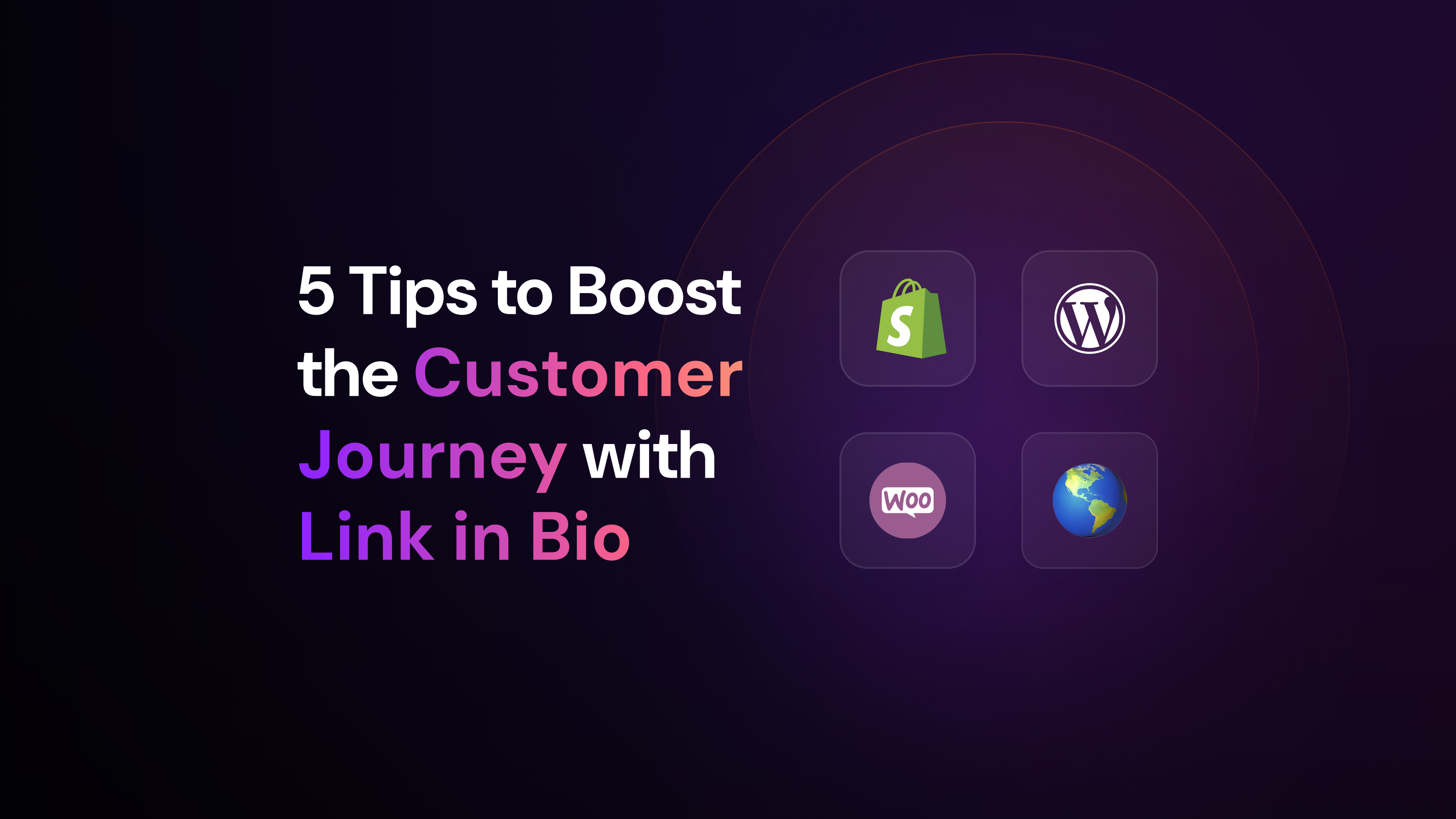Customer data is the key to understand customers beyond the confines of your own strategy, which makes you avoid dangerous assumptions to create relevant products and experiences.
Continuously data analysis will help you to come up with strategies that cover the market’s lacking points and elevate your marketing to a more meaningful approach.
We are witnessing a new customer era. Every company’s engines work daily to think, develop, and incorporate business and marketing strategies that put customers at the center of everything they do.
This new approach does not strike the market as a surprise. For the past years, with so much information in the palm of their hands, customers became more demanding and more willing to connect with brands that make proper use of their information to deliver more than just basic products and services.
If you have been paying attention, you already know customers value experiences more than anything else these days. This means true engagement will only be achieved by a remarkable customer experience that elevates your brand and creates a sense of connection with your audience. However, planning an exceptional customer experience takes a wide understanding and a sharp knowledge of how to solve consumers’ issues.
That is why customer data is definitely here to stay.
What is customer data and why does it matter?
Customer data is all the information a company gets from consumers whenever they interact with it. Whether it is personal, psychological, or demographic, customer data help companies clarify facts and avoid assumptions when thinking and refining business strategies related to customer experience.
The importance of customer data is related to the incessant need to build a strong customer understanding. Many organizations have already noticed that, by using data as a pillar, their operations draw near customer satisfaction and proper marketing approaches that return investments and reduces waste. On the other hand, without concise information about their customer base, companies fail to engage their audience and make sense of the many market opportunities datasets provide.
Customer experiences are tremendously affected by customer data, which means the right data extraction, validation and analysis are crucial to generate accurate outcomes that will enhance marketing and business plans. Customer data matters so many companies have embarked on customer data management (CDM) to correctly address data in their goals and daily work.
With trustworthy data at the palm of your hand, you will feel more confident in tactics to contact, acquire, and retain your customers, keeping their interest, and offering them exceptional engaging interactions. Customer data will also support your financial decisions, assisting you in where and when to allocate your budget.
How is customer data created?
As you read, a massive amount of data is being created. All around the world, people are navigating desktop and mobile devices. It doesn’t matter if they are shopping, replying to an online survey, or filling a lead form to get in touch with a software development company. Each of their digital interactions with brands creates data — which continuously provides the basis for algorithms to produce more data.
According to Deloitte in its Global Marketing Trends 2020 report, 90% of all global data were produced in the last two years, considering more than 26 billion smart devices circulating the globe.
Aware of data potential, the market has amended digital initiatives to maximize data collection, extraction, and validation methods. Big data analytics have been embedded to extract useful information from huge datasets, such as CRMs, that can’t be manually validated. Simultaneously, data scientists have been growing as popular as the need to adopt a data-driven culture.
These market signs alone are an extremely important indication that data is everywhere, and companies that don’t welcome it proactively will be in a tight spot.
Types of Customer Data
Customer data is separated into four main categories. In their own way, these categories will help you enhance the customer experience in different and empowering perspectives.
Personal data
Also known as identity and basic data, this type of information allows customers to be recognized by individual details and is divided into linked and linkable information.
Every information that can be used to identify a person without extra details is linked personal data — full names and emails, for example. Date of birth, physical address, and phone numbers are linked personal data too.
Now, linkable information doesn’t identify on its own. Still, when combined with other pieces of information, it is useful to draw a bigger picture. ZIP codes, age, gender, job titles, education level, marital status, and number of children are examples of linkable personal data.
Interaction data
If you ever wondered how your customers behave on your website, or how they interact with your emails and your social media accounts, interaction data will answer all of your questions.
Sometimes known as engagement data, interaction data brings a meaningful and solid viewpoint of how customers interact with your brand’s touchpoints.
Examples of interaction data are: Time spent on your website, page views, social media engagement, traffic sources, customer service feedback, and paid ad conversions.
Behavioral data
If you want to know how customers respond to experiences with your products and services, pay attention to behavioral data.
This type of data assists you to have a deeper understanding of behavior patterns your customers have throughout the purchase journey. This means interaction data may or not be considered behavioral data — it depends on the big picture and the goals you wish to achieve.
Some examples of behavioral information you can track are: Previous purchases, website heat-maps, customer loyalty program usage, repeated actions related to your products, and CTAs clicked.
Attitudinal data
The fourth and last type of customer data is related to how consumers perceive your brand. Unlike metrics you can easily measure, such as product purchases, click rates, website visits, and social network interactions, attitudinal data refers to emotions and individual opinions. It embraces feelings, which makes them highly subjective — that explains why this type of data is also referred to as qualitative data.
Continuously mining through attitudinal data will get you closer to proactively responding to consumers’ issues and anticipating trends they might be interested in. This is the perfect chance to get to know your consumers’ individual preferences and their point of view towards topics that interest you.
Attitudinal data examples are: Customer lifestyle, motivations, pain points, sentiments, and desirability. Customer reviews are excellent to gauge this sort of information.
Collecting customer data
As we have already emphasized, digital transformation has made every channel a powerful source of customer data. If your customers are interacting with your marketing and shopping channels, you can easily extract customer data from them using Customer Data Platforms (CDP).
There are several ways to collect customer data from distinct data points, and they depend on your goals.
That being said, before jumping to conclusions on which channel is the best to collect data from, make sure you address your data goals first. Is it to accelerate revenue? Develop new products? Get a more precise understanding if you ought to invest in a new marketing campaign? Start with the why, and then move forward.
More than predicting upcoming trends, recall that customer data should be highly attached to things that happened in the past. Past customer sales, buying decision patterns, abandonment rates (and much more) can be extracted from customer data to develop better strategies that respond directly to what your consumers did and said months, weeks, and days ago.
We have compiled some collecting data options ahead.
1. Website Analytics
Web analytics reports are excellent to understand what is resonating with your audience and how they are talking back to you.
When investigating this type of report, remember behavioral data insights can be extracted from heat-maps, bounce rate, page views, and even the devices your target market uses the most.
2. Social media engagement
Social media-based data can tell you a lot of things. Shares, likes, and comments on social media are basic engaging metrics you can measure to understand what customers think about your brand and what type of message they enjoy. You will likely get a good amount of data from social media analytics to make sense of customers’ sentiment towards you.
We highly recommend you to go even further and run social listening while analyzing social media insights. This will guarantee you interpret your customers’ interactions more accurately.
3. Customer interviews and feedback surveys
Feedback is crucial. Whether customers love what you’re doing or criticize it, you need to be available to take their considerations and opinions into account.
When done right, customer interviews, and feedback surveys will gather your audience’s interests, opinions, preferences, and how you can improve your products and services to serve them better.
Another data collection suggestion is to investigate customer churn. This explains the reason why some customers buy from you for a while and then leave. What affected their experience so they felt like not coming back? Is there anything you can do to improve this experience and avoid other customers from turning their backs on you?
If you’re looking for ways to extract behavioral and attitudinal data, consider searching for customer feedback and combine this information with other data to get a bigger picture.
4. Contact information
Contact information is vital to customer data. If you wish to communicate with your consumers, you should know where to find them according to the stage of their journey.
From phones to physical addresses and social media, contact information is needed to build a good amount of personal data you can rely on.
5. Customer service
Customer service is related to feedback but contains high potential itself. It is critical to allow customers to reach out to customer service software enabled to bring useful data your way.
As a consequence, customers can quickly seek help for big and small issues and solve their problems more easily all while providing you with more information.
Validating customer data
As vital as it is, customer data is useful when you are ready to properly extract and validate it. This means you need to find actual helpful information from your data sources, and pull them out to understand how valuable they are. This is what we call data extraction — and it will prevent you from swimming in a random sea of data.
Data extraction uses the right tools to streamline data from customer experience to marketing, and makes sure the information provided is useful for your teams to make better decisions.
To avoid wasting all the money, time, and effort you put into collecting data, there are some essential considerations about customer data validation you should pay attention to:
- Customer data must be a source of truth and facts about your audience: Above all things, remember customer data is supposed to assist you in using factual information to come up with fitting solutions. For this reason, the data you extract must be reliable and revolve around your clients. If the data you’re extracting isn’t customer-centric, you better reconsider why it is important.
- Customer data must be goal-oriented: Exploring multi-channels to extract data from without a clear goal in mind might lead you to conclusions that don’t make much sense. Make sure you know what your goals are from the beginning and set milestones to measure your progress. This will help you visualize how much data is affecting your operations and what else can be done.
- Customer data must be integrated: Thanks to technology, data can now be transferred from one channel to another in a matter of seconds — and that is essential to every company that needs fresh information to anticipate opportunities and maximize their potential. By using customer data integration (CDI) tools, you ensure information gets to the right people and set a pattern to collect, organize, unify, and visualize customer data wholesomely. Best of all, CDI automates these processes and cuts down routines that take time. This means your human resources will have more time to focus on what they’re good at: Finding perfect responses to all the data software and algorithms have extracted and assembled for you.
- Customer data must be contextualized: In-house data, also known as first-party data, should be combined with external data to give the information you’re putting your hands in a more precise context. There are two types of external data you can blend with your in-house insights to ensure a broader understanding: second party data and third party data. The second party data is the information provided by another company towards the audience that interests you — this type of data is usually shared between partners. In the meantime, third party data is collected by companies that don’t have a link to customers and sell information to other organizations. These data types can enrich your first-party data and elevate your insights.
Customer Data Analysis
Customer data analysis is crucial to any customer data strategy. Wrong data analysis might cause disconnected and poor responses from brands to erupt and bother customers with interactions they don’t need nor asked for.
As complex as it might sound to gather validated data to be analyzed, some special technologies can help the process be smoother and more efficient. Data mining is one of them. By mixing machine learning, statistics, and artificial intelligence (AI), data mining can analyze loads of data using sharp techniques —and the greatest thing about it is that its analysis is automatic.
Analyzing quantitative data
When it comes to quantitative data, you might come across the need to categorize it according to some classifications and segmentations. Or, perhaps, you will notice it is necessary to relate different data points and comprehend how specific characteristics affect the customer experience. Luckily, data mining provides many programmatic settings that can be adjusted to return the insights you are looking for.
If you’re willing to fragment customers to create more dynamic and creative ads, customer data analysis will help you find segmentation opportunities. If your team needs to associate behavioral patterns to develop a new campaign, customer data analysis will gather helpful information to predict how people will respond to your strategy. The opportunities are countless.
Analyzing qualitative data
On the other side, when we talk about qualitative data, many companies face the challenge of making sense of subjective information, such as sentiment. People’s emotions and feelings vary individually, and being stuck in the middle of so many variations is an uncertain place for your company to be at. If you’re wondering how to absorb valuable insights from this context, we have good news for you: there are ways technology can track important keywords to translate qualitative data into actionable decisions.
When analyzing qualitative data, pay attention to patterns that might make the situation clearer. Are your customers using the same keywords when they give feedback? Are the stories they tell somehow similar? Are there common elements in the ideas they communicate that can help you create a further sense of how they feel about your brand?
Take advantage of what customers say to you in feedback interviews, surveys, and methods of the sort, to gather enough data and take action.
Benefits of Customer Data Analysis
Relying on customer data will benefit you in countless ways. To help you understand how, we’ve listed some benefits in-detail right ahead:
1. Segmentation
Segmenting your customers is a smart way to get a broader view of what their issues are and how you can reach out to them more effectively. Separating them by age, demographics, gender, job title, and more makes it easier to plan specific marketing campaigns that will straightforwardly attract them, whether your goal is to attract them, engage them or make them buy more.
2. Personalization
People no longer wish to be contacted with general messages that lack a personal touch. Customer experience is a synonym of personalization and, if you don’t use data-based strategies to customize interactions with your consumers, it is highly likely that they will get frustrated by irrelevant content and mass communication. In contrast, personalization increases service quality and customer satisfaction.
3. Deeper audience understanding
Data is becoming the centerpiece of companies that desire is to remain relevant in customers’ minds. This happens because, without a detailed and precise understanding of their audience, companies will hardly add value to their customer base.
Customer data is the key to understand customers beyond the confines of your own strategy, which makes you avoid dangerous assumptions to create relevant products and experiences. Continuously data analysis will help you to come up with solutions around creative, data, and media — the right combination to empower your marketing and business approaches.
4. Revenue
When used correctly, customer data helps you understand how to increase your consumers’ loyalty and lifetime value, reducing churn at the same time. It also gives you a better understanding of where to invest in valuable campaigns and trends that will bring you more ROI.
5. Humanization
Human connection isn’t just another trend. The fact customers need to embrace companies with a purpose is changing their relationships with brands. People don’t want to be treated as a transaction. On the contrary, they expect companies to act authentically and be transparent in what they believe in, treating them individually. Pulling the right customer data contributes to humanize your brand so it corresponds to these expectations. It also frees your team to have more time to focus on how to genuinely engage customers.
Data-base your decisions
Now that you’ve come to the end of this article, you know there isn’t space for assumptions to guide your brand’s decisions anymore. More than ever, new ideas and improvements need to connect with customers’ expectations. In this context, embracing the right technologies to collect, extract, validate, and analyze data is crucial.
To find out more advantages that the use of Customer Data can provide for your company, contact one of our consultants, and resolve any doubts on the subject.



